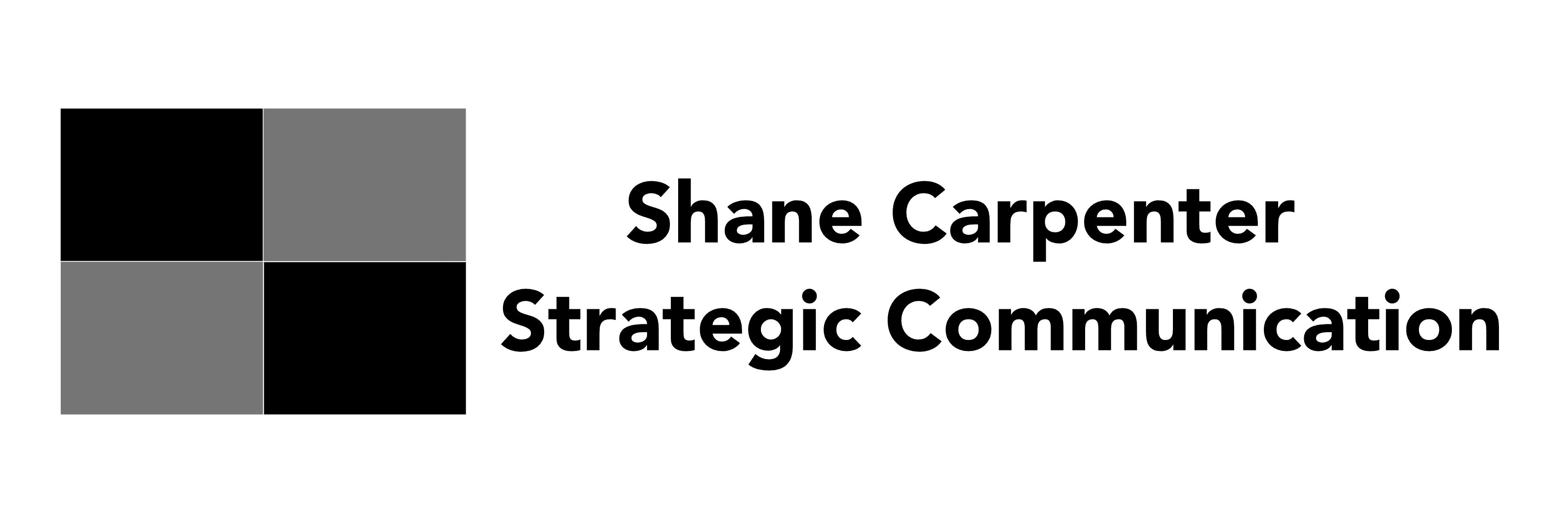
Middle of the funnel marketing is an important but sometimes forgotten element in both marketing and public relations. This is because much of the time organizations get caught up in driving awareness.
It’s an odd thing but many people seem to think that awareness is the golden goose. Awareness is important but it’s only one step.
The goal is to get people to the bottom of the funnel which means a sale. As much as you might want it to happen, your prospects aren’t going to skip the middle of the funnel. It’s an important step for them which means it’s an important step for you.
A child doesn’t learn to crawl one day and then starts running the next. There’s a process to get from crawling to running and that middle step is walking. Without learning to walk, a child would never be able to learn to run.
If you ignore the middle of the funnel, you’re going to find it hard, if not impossible to get your prospects to the bottom of the funnel.
For the sake of continuity, I’m going to use the same structure that was used in the previous article on top of the funnel marketing. This will help you to look at these two levels of the funnel and see how they compare. We have five areas to explore:
- Middle of the Funnel Meaning
- Middle of the Funnel Leads
- The Objectives of Middle of the Funnel Content
- Middle of the Funnel Content
- Middle of the Funnel Marketing
As I did the last time, I will also talk about the different content types for each area of the funnel and how the PESO model fits into it. After all, I do run a PESO agency. For those who are new to the PESO model it stands for:
- Paid Media
- Earned Media
- Shared Media
- Owned Media
If you want a deeper dive on PESO before we move on click here. Caught up? Good.
Let’s get started.
Middle of the Funnel Meaning
Before I can give a meaning for the middle of the funnel that we can share, we need to have some common meanings of how we are looking at this.
I’ve talked about three concepts in the past that are slightly different but related. These concepts are the marketing funnel, the buyer’s journey, and the five levels of awareness. When I talk about the different levels of the funnel, I’m pulling these three concepts together.
What do these three concepts look like?
I define the marketing funnel as:
- Awareness
- Interest
- Consideration
- Conversion
- Retention
- Evangelism
Interest and consideration are what we will consider as the middle of the funnel.
The buyer’s journey is defined as:
- Awareness
- Research
- Purchase
- Advocacy
In this model, research will be of primary interest for the middle of the funnel.
The five levels of awareness concept, developed by Eugene Schwartz in his book Breakthrough Advertising, is defined as:
- Unaware
- Problem Aware
- Solution Aware
- Product Aware
- Most Aware
We will be most interested in the problem aware and the solution aware.
In the middle of the funnel, people are already aware of you. Remember, awareness is a top of the funnel activity so at this point, you have different concerns. This means what you talk about needs to change.
If you remember, I included interest in top of the funnel marketing as well. I feel like interest be broken down much like Schwartz did with awareness. I don’t think that all interest is the same. The interest that we are talking about at this stage isn’t mild interest. It’s stronger. It’s enough to make people start to move people into consideration of your product/services.
When you consider something what do you do? Research. Notice that is the second step in the buyer’s journey. You have strong enough interest to consider something and begin researching it.
Somebody who doesn’t have or isn’t aware they have a problem is not going to move forward. They may be slightly intrigued, but they aren’t truly interested.
If you remember our top of the funnel marketing conversation, the problem aware know they have a problem but aren’t sure there is a solution. Solution aware people know what they want but aren’t sure if your product/service will provide it.
Middle of the Funnel Leads
In the middle of the funnel, you are focusing on the problem aware and the solution aware. They need more information to move forward.
You need to provide answers to their questions but you can’t do that if you don’t know what their questions are.
Let’s say you’re organization is having issues with communication. Everybody knows what needs to be done and they are doing it. The problem is that they aren’t communicating with each other so the same work is being done and redone. Your people are working so the issue isn’t that they aren’t being productive but there is an issue with efficiency. The root cause of this issue is communication.
You’ve become aware that my company can help with this because we have a piece of software that will show everybody what work is being done by whom. It also allows them to message each other so they clear up any questions or misconceptions and it’s available for both and desktop which is a win for your people who are on the go.
You hit my companies site and we don’t talk about any of that. We talk about how many people can use the program under one license. That’s what we’ve chosen as our selling point because we allow more people to use the software under our license than our competitors.
That may be a nice feature for you but has it been communicated how I’m going to solve your problem? Nope.
That’s where the content in the middle of the funnel marketing often fails.
Remember, it’s not about you. It’s about them. How can you solve their problem and help them get the results they want? This is what your middle of the funnel prospects want.
Middle of the Funnel Objectives
You have two major objectives with your middle of the funnel marketing. The first is to increase awareness of your expertise. You wouldn’t go to an eye doctor to get treated for a heart murmur. You want somebody who knows about the heart.
If people don’t think you know what you’re doing, all the marketing and public relations campaigns in the world won’t change their opinion. But, as people see your expertise, you’ll develop authority and gain trust. Without those three things, you won’t meet your second objective which is to move people from interest to consideration.
Let’s look at an example of how this can work.
I’ve told a story of how I became aware of a blog through social media but only visited their site a few times a year. Then one day I saw an article on their site that made me a regular reader of the blog but for a year that’s where it started and ended. I read the blog.
They had community but didn’t post anything or engage with anyone for the first year I was there. I never commented on any articles. I never engaged them on social media even though I followed them on Twitter, Facebook, and LinkedIn.
Even though they had products and services I didn’t buy anything from them.
That first year was about them showing their expertise and building authority and trust with me. I knew all of them by name. I knew what they looked like and even what their voices sounded like. Yet, there wasn’t a single word that was ever shared between me and anybody from the blog.
At the end of that year, I trusted them completely and bought three products from them within a month.
Three years have gone by and they are one of my top authorities on anything marketing or public relations related. When I have a question about anything related to these topics, the majority of the time, I start my research on this blog.
Middle of the Funnel Content
Part of building expertise, authority, and trust is sharing solutions.
Twenty years ago the idea of sharing a solution without a cash payment would have seemed crazy. Now it’s expected. Why? It shows expertise while building authority and trust.
The amount of knowledge that I have gained from Spin Sucks, Moz, SEMrush, Marketing Profs, Orbit Media, and many others without pulling out my wallet is worth a small fortune.
I trust all of them and value the expertise they share.
I do a fair share of marketing on their behalf. If you follow any of my personal or business accounts on social you’ve seen me share a lot of content from these sites. You might have even seen me advocating on their behalf.
So what does the content look like?
It’s the difference between looking at something from 50,000 feet and 10,000 feet. As you get closer there is more detail. Like top of the funnel content it’s educational and focuses on a challenge or solution but middle of the funnel content shares deeper insights.
It can be blog post but it’s usually something more because you want to go deeper on your topic. The format of your content will impact the expectation of your audience. Most people aren’t going to read a 7,000 word blog post.
Ebooks, whitepapers, and webinars are all great ways to do this because they give you a format that allow you to go deeper and add the detail that people want. In most cases, they should fall into the owned media spectrum of the PESO model
Much of your middle of the funnel content is going to come at a price. I told you above that I have never pulled out my wallet for much of the content that I consume but that doesn’t mean there wasn’t a cost.
We are conditioned to think that price = money. That’s not necessarily the case. What I used to “buy” much of the middle of the funnel content that I found so helpful was my email address.
With top of the funnel marketing asking for an email address seems more innocuous. You tell people, “Like what you see? Don’t miss anything. Just give us your email address and we’ll keep you updated with our new content.”
If you like the content it makes perfect sense. I signed up for a newsletter for a blog I liked initially because I found the content valuable and I didn’t want to miss anything. This is why I am on the mailing list of other sites as well but most of the mailing lists I’m on are because I wanted the middle of the funnel content and I had to “pay” using my email address. By giving an email address, people are signaling that they are willing to have that deeper conversation.
Middle of the Funnel Marketing
Now let’s look at this from the lens of PESO. As with top of the funnel marketing, each area of PESO as its own part to play.
Let’s look at an example.
You have worked in public relations (PR) and marketing agencies for 25 years and you’ve decided to use that knowledge as a consultant. You want to help people who own agencies, like me, grow their businesses. Your product is a twelve-week online class that will show me how to do this and it will include weekly one hour meetings with you so we can talk about any issues I’m experiencing and give me some coaching.
I follow your social accounts and I’m visiting your blog on a regular basis and sharing its content on social media. I’ve also signed up for your email newsletter. I’m firmly in the middle of the funnel at this point and you need to move to the bottom of the funnel.
Paid media is going to become more focused. It’s no longer just trying to hit PR and marketing pros. It’s focusing on those specific people who have shown interest. You are going to using it to reach me personally.
This is called retargeting. Somebody has shown interest so your efforts focus in on them. Your ads aren’t going to focus on moving me to your website but to get the middle of the funnel content you are creating.
The earned media opportunities can include guesting on podcasts or webinars. You can do this at the top of the funnel as well but where it’s more general at this point, in the middle of the funnel you are looking for those opportunities that allow you to go deeper on a topic.
Like with paid media, the focus of shared media changes from “visit my website” to “get this resource”. I’ve already shown interest and going your website so your message to me is that you have something that can really help me get to the next level.
At this point, your email list which falls under owned media, becomes even more valuable. Like paid media where you can retarget me, you will be using email to do the same thing. Your blog likely covers a range of topics but the email your sending me are messages showing that you understand my pain and offering me your solution which happens to be your course. It’s going to provide me a call to action which could be something like a 30-minute conversation.
The whole point of middle of the funnel marketing is to do things that are designed to pull me to the bottom of the funnel.
Fittingly, this our topic next week.
A Quick Review
We covered a lot of ground today. I’m looking at the word count and its over 2000 words so let’s distill this down a bit.
This is what you should remember about middle of the funnel marketing:
- It is targeting those who are problem aware or solution aware.
- Content should be educational and focus on a specific issue, challenge, or solution BUT it will be more focused and go deeper than top of the funnel content.
- Show your expertise and build authority and trust.
- Your objective is to create enough interest and consideration to pull people to the bottom of the funnel.
*Photo by Austin Chan on Unsplash
- Is Your Marketing Connected? - March 6, 2025
- Stop Planning and Start Strategizing - October 24, 2024
- The Importance of Creating a Connection With Your Marketing - June 6, 2024

